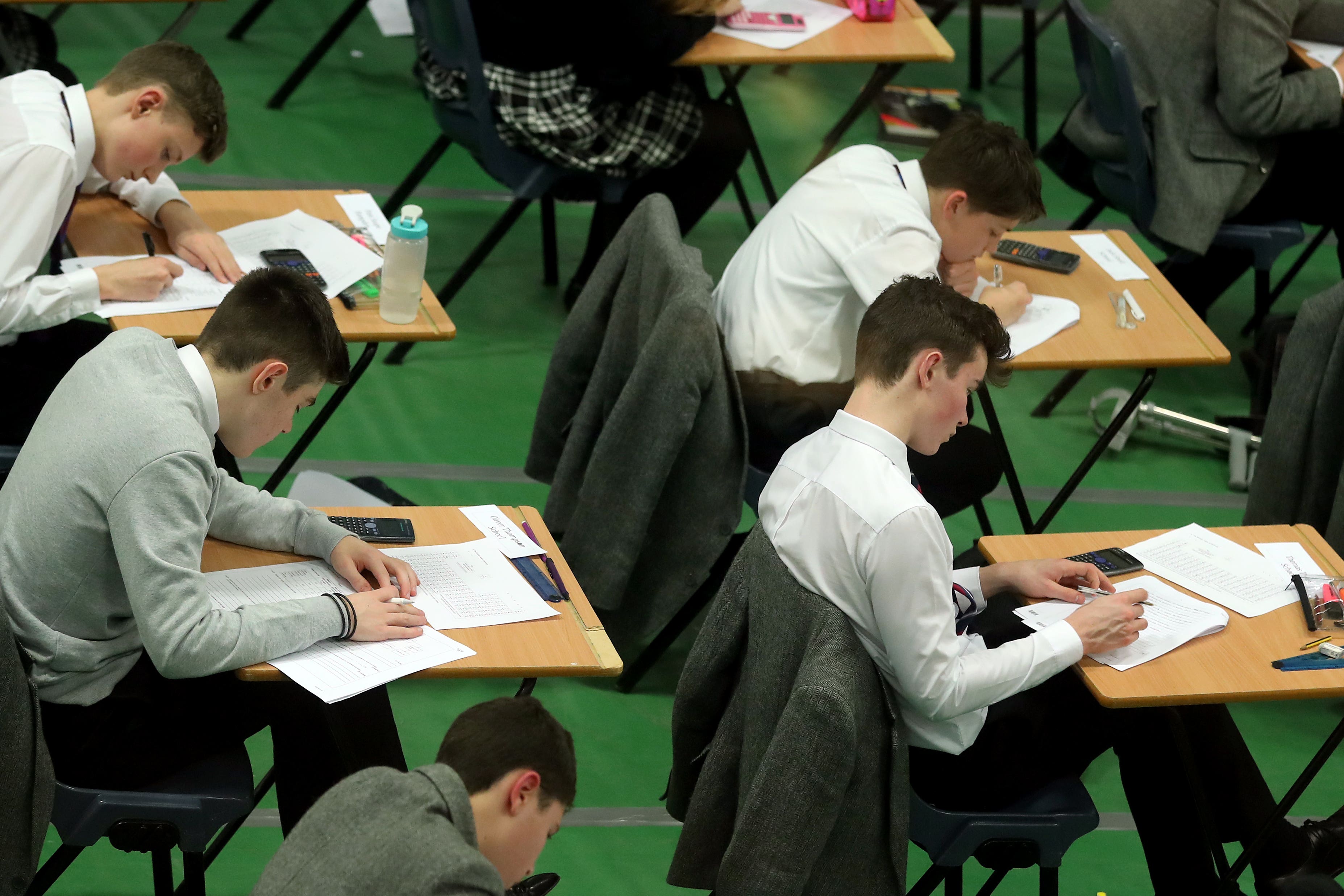GCSE results this year have seen a slight rise in the proportion of top grades awarded, while the gap between girls and boys narrowed to its closest point this century.
Students in England, Wales, and Northern Ireland received their exam results on Thursday. More than one in five (21.9 per cent) UK GCSE entries secured the highest marks – at least a grade 7 or an A – a marginal rise of 0.1 percentage points from last year's 21.8 per cent.
This figure also surpasses the 20.8 per cent recorded in 2019, the last year before the pandemic.
The proportion of entries getting at least a 4 or a C grade – considered a “standard pass” – has fallen from 67.6 per cent in 2024 to 67.4 per cent this year – a drop of 0.2 percentage points.
However, this remains marginally higher than the 67.3 per cent seen in 2019. These national figures, published by the Joint Council for Qualifications (JCQ), cover all GCSE entries from the three nations.

Nearly a quarter (24.5 per cent) of girls’ GCSE entries were awarded at least a grade 7/A compared to almost a fifth of boys’ entries (19.4 per cent) – a 5.1 percentage point gap. This is the narrowest lead enjoyed by girls since at least 2000, which is the earliest archive data available.
Meanwhile, 70.5 per cent of girls’ GCSE entries were awarded at least a grade 4/C compared to 64.3 per cent of boys’ entries – a 6.2 percentage point gap.
The overall rate for grades 1/G or above is 97.9 per cent, which is the same as 2024 but is down from 98.3 per cent in 2019.
Sir Ian Bauckham, chief regulator at Ofqual, England’s exams regulator, said this year’s GCSE results are “stable” in comparison to the past two years – when grading returned to pre-pandemic levels in England.
He said the differences this year are “natural variation” that would be seen between any year.

On the gender gap, Sir Ian told PA: “What we see today in the results is a very small apparent narrowing of the gap in performance between boys and girls.
“It’s important for people to understand that there is still a gap in the performance of boys and girls, but what we can say is that it doesn’t appear to be growing at the moment.”
In England, Ofqual brought GCSE grading standards back in line with pre-Covid levels in 2023, and exam regulators in Wales and Northern Ireland returned to pre-pandemic grading last year.
The move came after Covid led to an increase in top GCSE grades in 2020 and 2021, with results based on teacher assessments instead of exams.
Many of the pupils who are receiving their GCSE results this summer were in year 6 when schools closed because of the pandemic.
Education leaders have warned that these pupils, who moved from primary to secondary school in the middle of the pandemic, have faced a series of challenges – including school attendance issues and cost-of-living pressures.
Education secretary Bridget Phillipson said this cohort of students had shown “remarkable resilience” despite the disruption to their education.
While traditional A*-G grades are used in Northern Ireland and Wales, in England these have been replaced with a 9-1 system, where 9 is the highest.
A 4 is broadly equivalent to a C grade, and a 7 is broadly equivalent to an A.

In England, many students who do not secure at least a grade 4 – which is considered a “standard pass” – in English and/or maths GCSE are required to retake the subjects during post-16 education.
Education leaders have called for the government’s policy of compulsory resits in the two subjects at GCSE to be scrapped.
Jill Duffy, chief executive of the OCR exam board, said: “Nearly a quarter of GCSE maths and English entries are resits. This is an all-time high.
“Less than a fifth of resitting students achieved the grade 4 they need to break out of the resit cycle. This is a resit crisis.
“Tinkering at the edges of policy won’t fix this. We need fundamental reform to maths and English secondary education – especially at key stage 3 – to support those who fall behind in these crucial subjects.”
“Boys are slowly catching up with girls, but the GCSE attainment gap remains significant.”
More than 360,500 Level 1 and 2 vocational and technical qualifications (VTQ) results have also been awarded to pupils.







